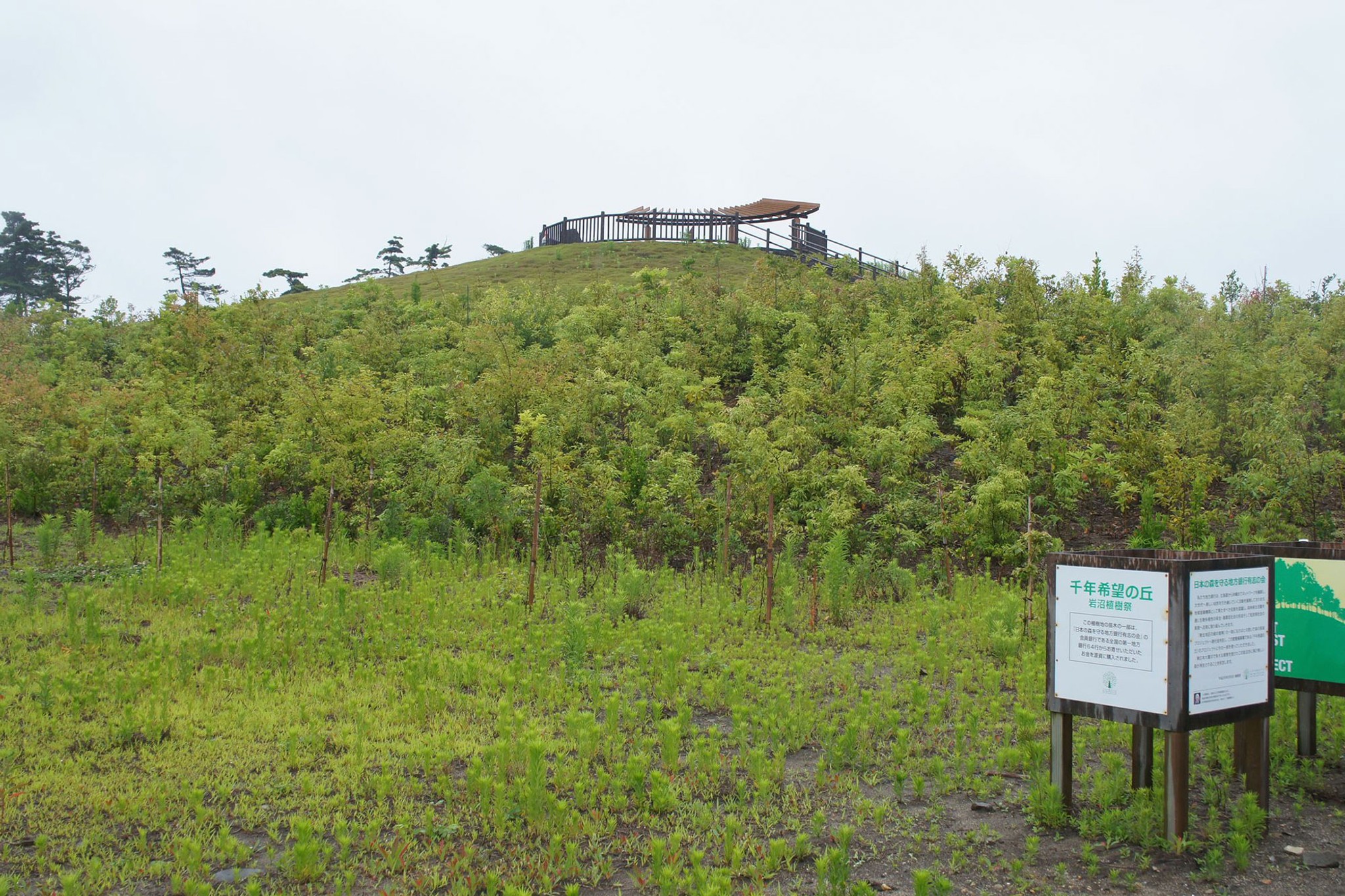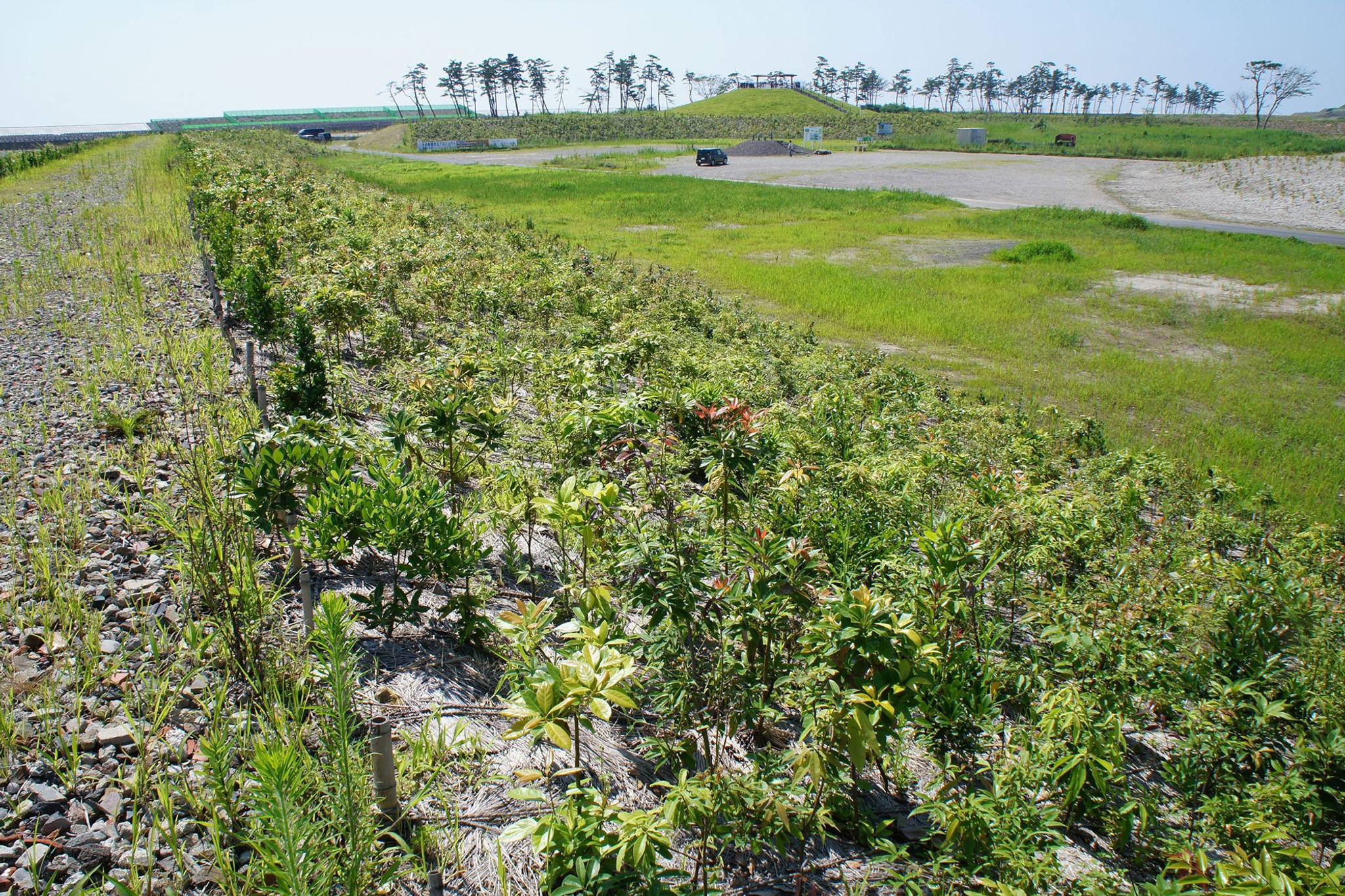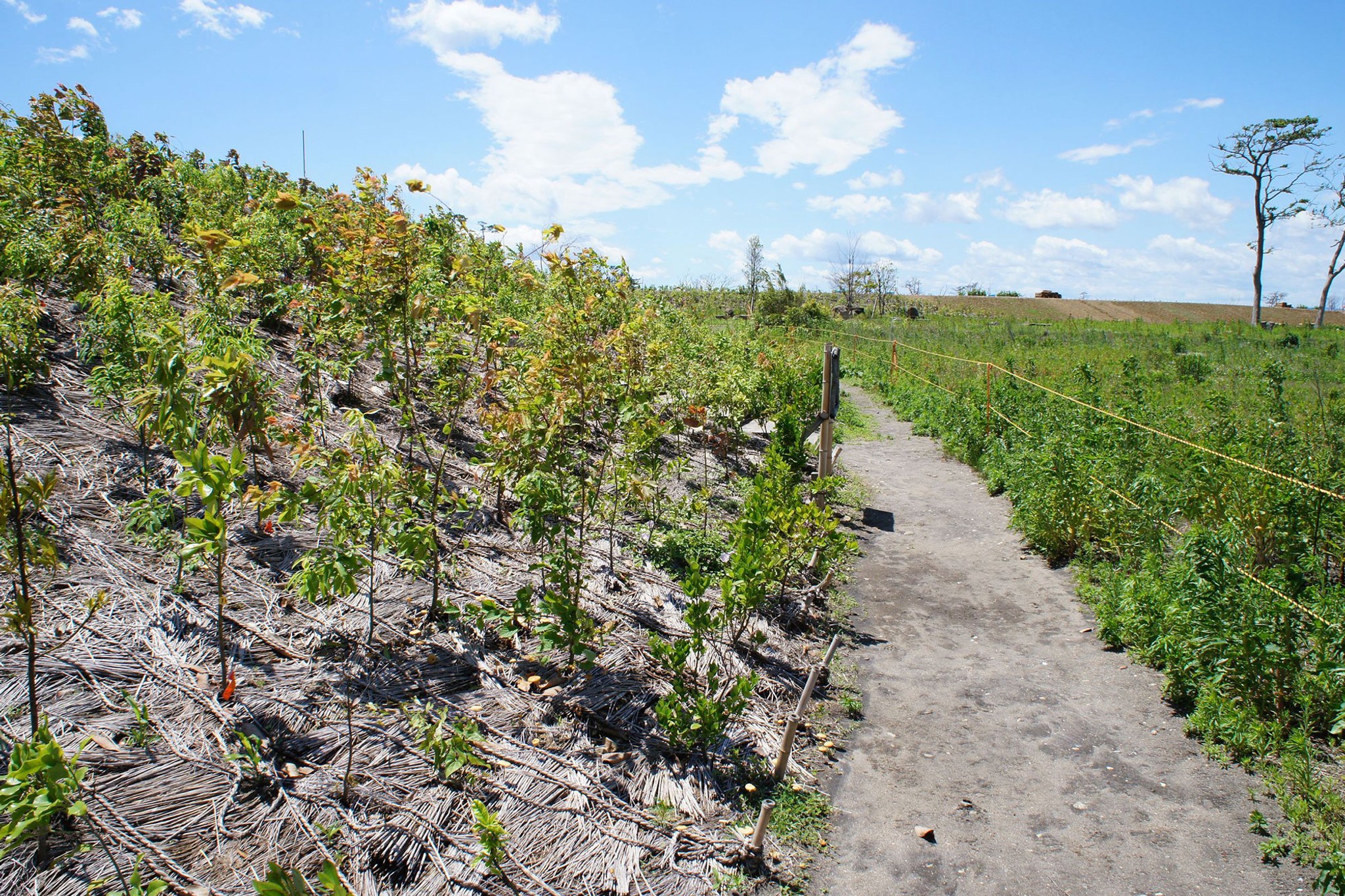What Are Disaster Proofing Forests?

The earthquake and subsequent tsunami of eastern Japan in 2011 made large coastal areas initially uninhabitable.
One project around Iwanuma named 'Millennium Hope Hills' was instigated along 10 km of affected coastal land and is based around the concept of creating a green tide embankment that could lessen the effects of future tsunamis and even provide shelter.


The 'Millennium Hope Hills' Project
Based around Dr. Akira Miyawaki’s concept of "environmental and disaster proofing forests" 14 hills and several kilometers of forest shelter breaks follow the contours and were formed mainly from over 575,000 tons of the tsunami debris and waste.


Around 350,000 indigenous saplings were then planted by thousands of local people to create the green embankments.
Species were specially selected to be the local deep rooting and fast growing ones that have shown the best resilience in the past.
In theory, these green walls should considerably lessen the power of the tsunami wave and also mitigate the effects of the dangerous pull back of the wave and debris damage, while surviving and continuing to offer protection.







